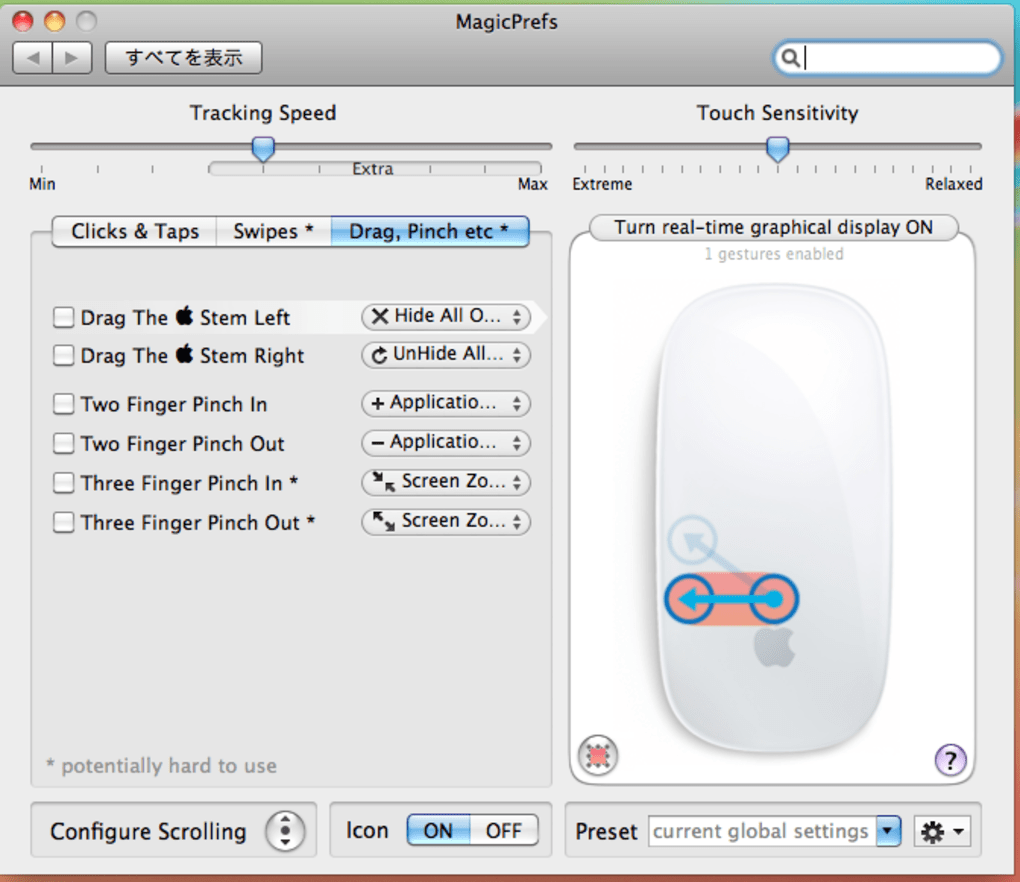
- #Magicprefs sierra for mac
- #Magicprefs sierra install
- #Magicprefs sierra drivers
- #Magicprefs sierra manual
- #Magicprefs sierra software
System administrators can whitelist kernel extensions based on the Bitdefender Team ID: GUNFMW623Y. For more details, please refer to these Apple resources: System administrators can use MDM to whitelist specific kernel extensions and thus suppress these warnings.
#Magicprefs sierra for mac
Click Fix now to open the Security & Privacy window.Īfter allowing kernel extensions from Bitdefender, the Endpoint Security for Mac user interface will inform you that your Mac is safe.
If you receive the notification You are at risk in the Endpoint Security for Mac user interface: Close the application to enable the Allow button.

In some situations, the Allow button may be disabled:
#Magicprefs sierra software
#Magicprefs sierra manual
Immediately after a manual installation or remote deployment of Endpoint Security for Mac on macOS High Sierra (10.13), the operating system shows the System Extension Blocked warning: The kernel extensions that were installed before upgrading to macOS High Sierra or that are replacing previously approved extensions do not require approval. Also, Endpoint Security for Mac user interface will show a critical issue. Until the user approves the Bitdefender kernel extensions, Endpoint Security for Mac tamper protection, Content Control and Device Control modules will not work. Starting with macOS High Sierra (10.13), user approval is required for loading kernel extensions.
#Magicprefs sierra drivers
UNINSTALL MAGICPREFS DRIVERSĪssuming you're using OS 10.13 or later (High Sierra/Mojave), it's likely you havn't enabled the KEXT.Īpple has become somewhat obsessed with security (probably a good thing at the end of the day), and when installing new drivers you have to confirm that the OS can load them.Bitdefender Endpoint Security for Mac uses macOS system extensions (also known as kernel extensions) to ensure protection cannot be tampered with and to provide Content Control and Device Control functionality. This is covered in steps 5/6/7 of Installing iShowU Studio Seit dem ich MagicPrefs für meine Magic Mouse auf den iMac installiert habe, stelle ich fest, dass der Rechner oftmals Morgens schon 'wach' ist. You might be able to solve the right-click issue in Magic Prefs as well. Normaladerweise wacht der doch nur auf, wenn ich eine Taste Berühre oder ähnliches. to get around that with MagicPrefs but Ive since uninstalled that as it hasnt. Waycom Tablet: Make sure you're not trying to click 'Allow' with the pen.Make 100% sure the kexts are loaded! (the Allow button only shows if you've recently attempted to load a new kext).Go to Security & Privacy in System Preferences.Ich habe das Programm MagicPrefs in Verdacht, da in der. MagicPrefs: This, from a user recently.In fact, you can't use any 'assistive' tech at all. "I actually just got it figured out early this morning. Some system processes may still use Edge in the background. The issue was that I use MacPrefs for my Magic Mouse 2 to give it more functionality and user friendliness and that “program” had to be disabled for me to be able to allow the kext to be fully installed. Open Start menu and search for Default Apps and open it. Scroll to a web browser tab and click it, select any other browser as default. Uninstall Windows browser from its folder. Prior to disabling theMacPrefs, I would click allow and nothing would happen.

Some users have reported not having an Allow button at all. There doesn't seem to be a particular pattern to this. I've written a much longer article on other things I've tried with various customers. All that I know how have eventually gotten the Allow button to show up. Unfortunately it has been through trial and error.
#Magicprefs sierra install
See: iShowU Audio Capture kext install problems I want my 'Allow' button back In your WordPress installation interface, switch to Settings. Find the Delete section at the bottom of the page. Choose Delete and confirm the site deletion. This is for people that know what they are doing. If you are familiar with the Terminal app, you can use command lines to uninstall Python from your Mac. 'Allowed' extensions are stored in a SQLite DB, which can be modified. For this, follow these steps: Move Python to Trash. Open the Terminal app and type the following command line in the window: user name sudo rm -rf /Applications/Python 3.6/.


 0 kommentar(er)
0 kommentar(er)
